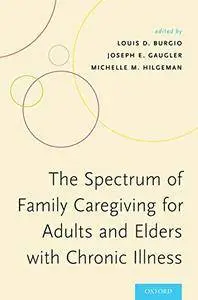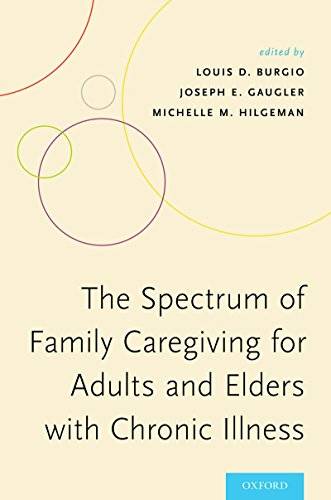Louis D. Burgio, Joseph E. Gaugler, Michelle M. Hilgeman, "The Spectrum of Family Caregiving for Adults and Elders with Chronic Illness"
2016 | pages: 329 | ISBN: 0199828032 | PDF | 20,6 mb
2016 | pages: 329 | ISBN: 0199828032 | PDF | 20,6 mb
The vast majority of care provided to adults and elders with chronic illness is given in the home, most often by family members. The caregiver's role is daunting; caregiving is often referred to as a 'career,' requiring long hours and arduous tasks. Primary caregivers show higher rates of morbidity and mortality, and caregiving is a major source of stress and burden to caregiving families. Presently, very little support is available to caregivers from either State or Federal agencies. However, awareness of this worsening problem is growing among health professionals and policy makers.
The Spectrum of Family Caregiving for Adults and Elders with Chronic Illness is written for individuals in the helping professions who are in roles that interface with or serve family caregivers who are supporting an adult or elder with a chronic condition. The volume includes eight disease-specific chapters written by experts from various disciplines. Each discusses the caregiving role and includes a thorough review of the literature on the characteristics of caregivers and care-recipients, including related care needs, issues, and challenges unique to that chronic illness. Chapters also review the extant literature on caregiver interventions. An Evidence Table is included in each of these chapters so that the reader can easily judge the quality of evidence supporting the intervention studies. Finally, each chapter includes two case studies describing common problems encountered by caregivers, along with descriptions of interventions used to address these problems. The final chapter summarizes the state of the science on caregiving roles and caregiver interventions and discusses the most relevant challenges and barriers faced by today's caregivers and caregiver advocates. This book will be valuable to clinicians and those in the helping professions, as well as academics and researchers with an interest in the study of family caregiving and caregiver interventions, and to health administrators, public officials, and policy makers concerned with chronic illness care and management.
My Link



